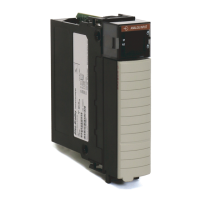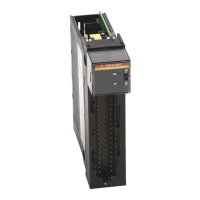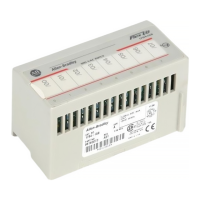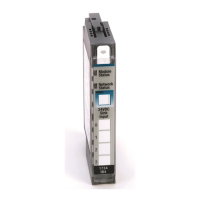Rockwell Automation Publication 1756-UM540E-EN-P - December 2017 99
1756-OF8I Isolated Analog Output Module Chapter 5
Requirements
You must use output modules that support Redundant Owner connections:
• 1756-OF8I output module
• All Allen-Bradley® 1756 input modules that support multiple module
owners
Redundant owner supports these ControlLogix 1756 Ethernet modules:
• 1756-EN2T
• 1756-EN2TR
• 1756-EN2F
About Redundant Owners
Redundant Owner can work in single-controller and multiple-controller
applications, with or without redundancy.
Your application determines which controller is the Claiming Owner and which
is the Ready Owner. The relationship is akin to a primary and secondary
relationship.
Restrictions
The redundant owner solution uses two connections for every I/O module–one
for each of the redundant connections. Each connection is shown in the Studio
5000 Logix Designer® I/O Configuration–two entries for each I/O module.
• The two I/O module configurations must match.
• Two connections are used for each I/O module.
• An output module’s ideal RPI is 25 ms.
This speed is for the fastest response to an event. Any output module RPI
can be used, but may have increased response time to a fault.
• An input module’s ideal RPI is 25 ms, though any input module RPI can
be used.
• Direct I/O connections must be used.
Also see Redundant Owner Configuration Tags
on page 211.

